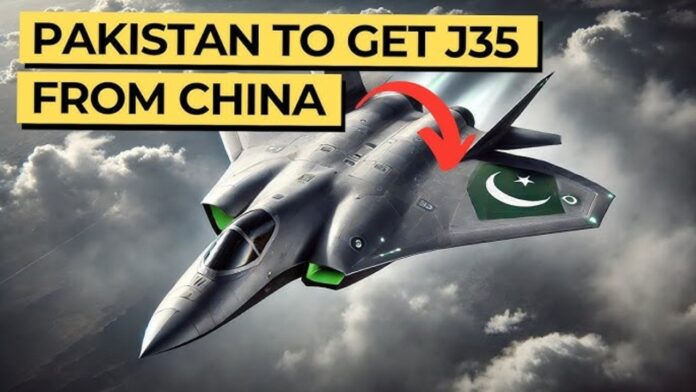Pakistan is reportedly preparing to acquire the J-35 fifth-generation stealth fighter jet from China, potentially giving it a decisive advantage over India in advanced combat aircraft acquisition. This trend, where Pakistan seems to stay ahead of India in air power upgrades, has been evident since the mid-20th century.
A Historical Overview of Fighter Jet Acquisitions
The competition began in the 1950s when India acquired Dassault Ouragan (Toofani) jets in 1953. Pakistan responded by procuring 102 advanced F-86F “Sabre” jets from the United States.
As India inducted Dassault Mystère IV fighters in 1957, Pakistan countered with F-104 Starfighters in 1961, supplied through the US Mutual Assistance Program. India responded with Soviet MiG-21 jets in 1964 to bridge the capability gap.
Fast forward to the 1980s, Pakistan’s acquisition of the F-16 Fighting Falcon in 1981 prompted India to procure Dassault Mirage-2000 jets in 1982 and Soviet MiG-29 fighters in 1985. This competitive dynamic has continued well into the 21st century.
Modernization Efforts
In 2010, Pakistan co-developed the JF-17 fighter jet with China and inducted its first squadron. India, meanwhile, introduced the indigenous Tejas Mk1 fighter six years later in 2016. Pakistan has further advanced its fleet by introducing the JF-17 Block III in 2023, while India’s Tejas Mk1A production has faced delays.
Now, Pakistan’s focus on acquiring the J-35 stealth fighter could redefine the air power balance in South Asia.
J-35: A Game-Changer?
Reports suggest Pakistan has authorized the purchase of 40 J-35 stealth fighters, with deliveries expected within two years. Unveiled at the Zhuhai Air Show, the J-35 is an upgraded version of the earlier FC-31. It boasts advanced WS-19 engines, superior radar systems, enhanced stealth features, and an array of modern weaponry.
Air Chief Marshal Zaheer Ahmed Baber Sidhu of the Pakistan Air Force (PAF) confirmed in early 2024 that groundwork for acquiring the J-31 (an earlier variant of the J-35) was complete. The J-35 is anticipated to significantly enhance Pakistan’s capabilities, particularly when paired with its existing fleet of F-16s and J-10C aircraft.
India’s Fifth-Generation Fighter Jet Conundrum
India is yet to induct a fifth-generation stealth fighter. The Advanced Medium Combat Aircraft (AMCA) program is still under development and is unlikely to be operational before 2034. India’s options for acquiring stealth fighters remain limited, as it faces challenges in securing the US-made F-35 or Russian Su-57 due to geopolitical and technical constraints.
The Balance of Air Power
If Pakistan successfully inducts the J-35 by 2026, it could field two squadrons of stealth fighters by 2030. By contrast, India’s inventory would remain devoid of any stealth aircraft, relying instead on Rafale and Su-30 fighters. Experts believe this could shift the balance of air power significantly in Pakistan’s favor.
Stealth fighters like the J-35 are difficult to detect and intercept, offering a first-strike advantage. While details of the J-35 remain classified, Chinese analysts claim it to be one of the most stealthy aircraft in the world.
How India’s “combat-proven” Rafale and Su-30 jets fare against the “untested” J-35 remains to be seen.



